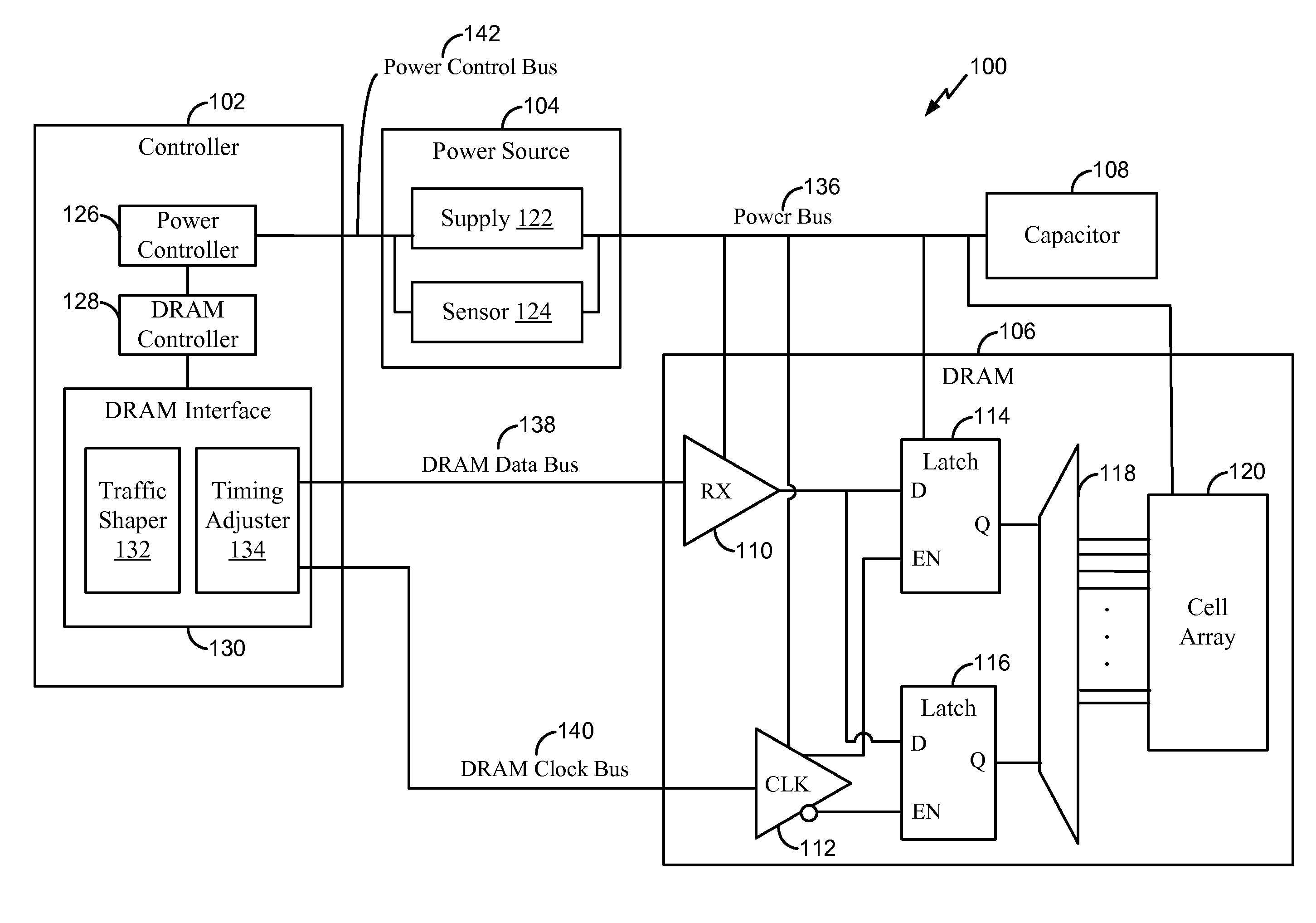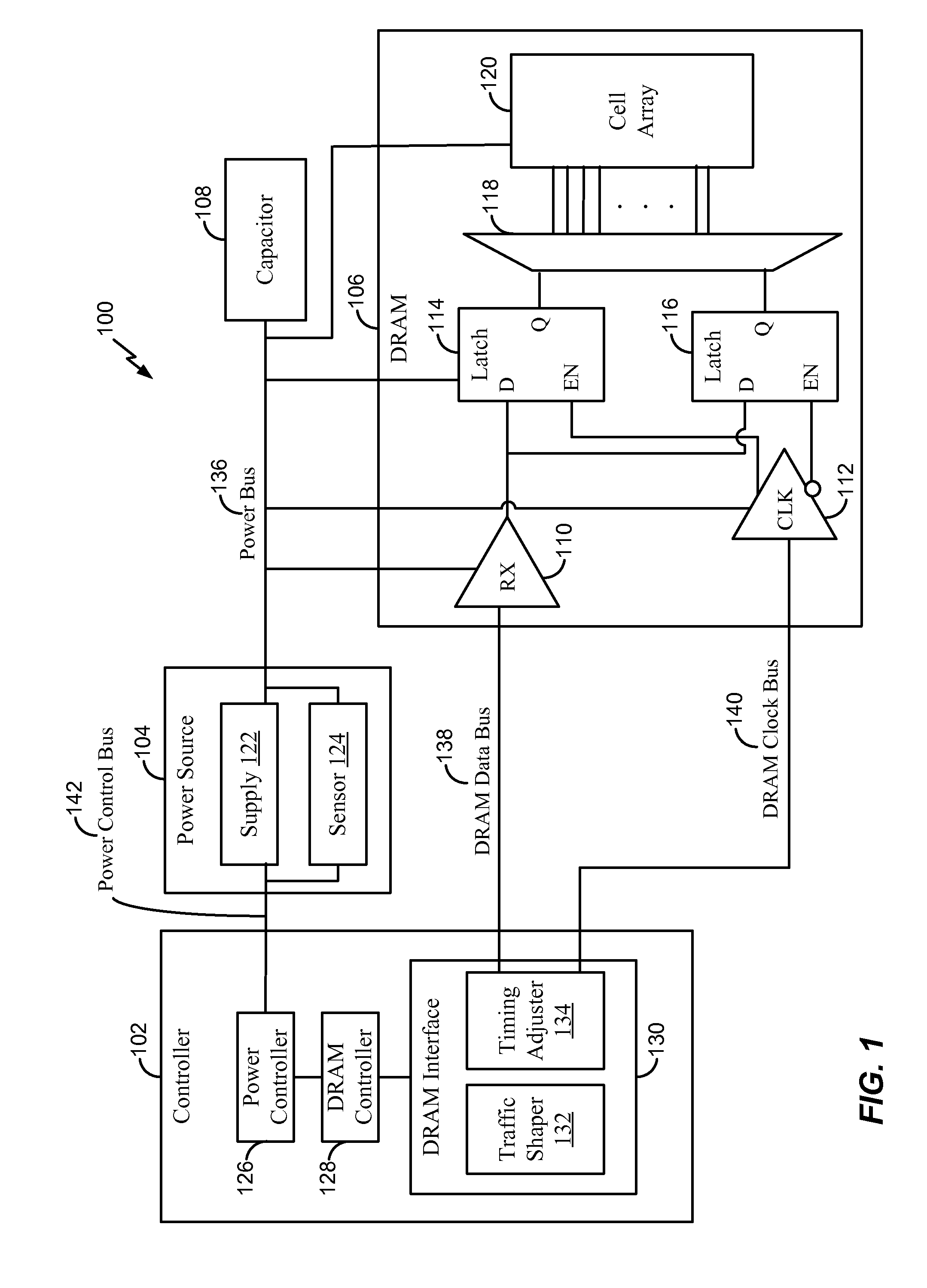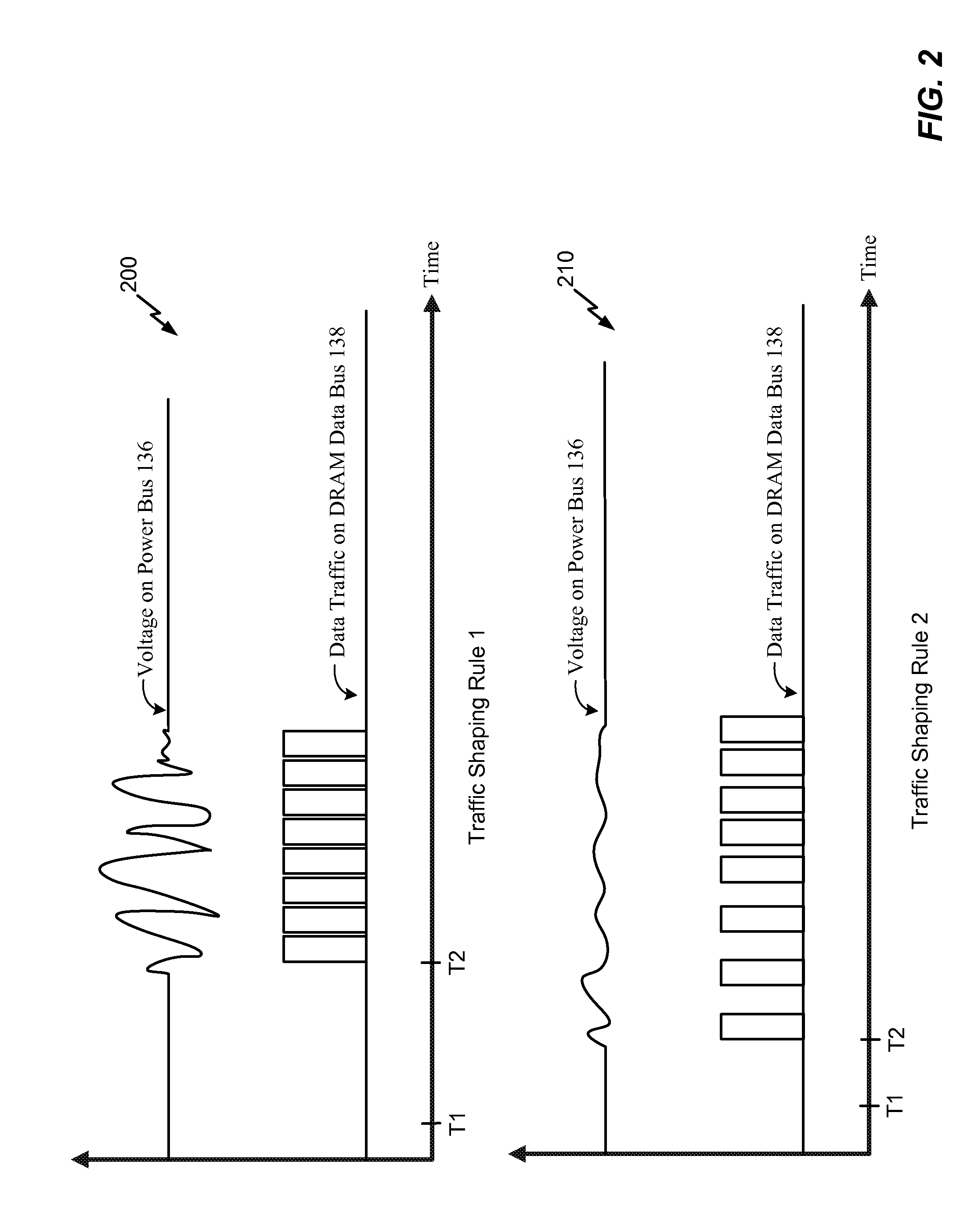Dynamic random access memory timing adjustments
a random access memory and timing adjustment technology, applied in the field of dynamic random access memories, can solve the problems of data errors at the dram, timing margin violation at the latch coupled to the data receiver, increased jitter between the data receiver and the clock receiver, etc., to reduce the amount of voltage drift, reduce the data rate of data traffic, and reduce the effect of voltage fluctuations
- Summary
- Abstract
- Description
- Claims
- Application Information
AI Technical Summary
Benefits of technology
Problems solved by technology
Method used
Image
Examples
Embodiment Construction
[0026]Referring to FIG. 1, a particular illustrative aspect of a system 100 that is operable to reduce jitter-based errors at a dynamic random access memory (DRAM) is shown. The system 100 includes a controller 102, a power source 104, a DRAM 106, and a capacitor 108.
[0027]The DRAM 106 includes a data receiver (RX) 110 and a clock receiver (CLK) 112. The data receiver 110 and the clock receiver 112 may be coupled to receive power from a power bus 136. The DRAM 106 also includes a first latch 114 (e.g., a first D-type flip-flop circuit) and a second latch 116 (e.g., a second D-type flip-flop circuit). For example, an output of the data receiver 110 may be coupled to a data input (D) of the first latch 114 and to a data input (D) of the second latch 116. An output of the clock receiver 112 may be coupled to an enable input (EN) of the first latch 114, and an inverted output of the clock receiver 112 may be coupled to an enable input (EN) of the second latch 116. For example, the clock...
PUM
 Login to View More
Login to View More Abstract
Description
Claims
Application Information
 Login to View More
Login to View More - R&D
- Intellectual Property
- Life Sciences
- Materials
- Tech Scout
- Unparalleled Data Quality
- Higher Quality Content
- 60% Fewer Hallucinations
Browse by: Latest US Patents, China's latest patents, Technical Efficacy Thesaurus, Application Domain, Technology Topic, Popular Technical Reports.
© 2025 PatSnap. All rights reserved.Legal|Privacy policy|Modern Slavery Act Transparency Statement|Sitemap|About US| Contact US: help@patsnap.com



